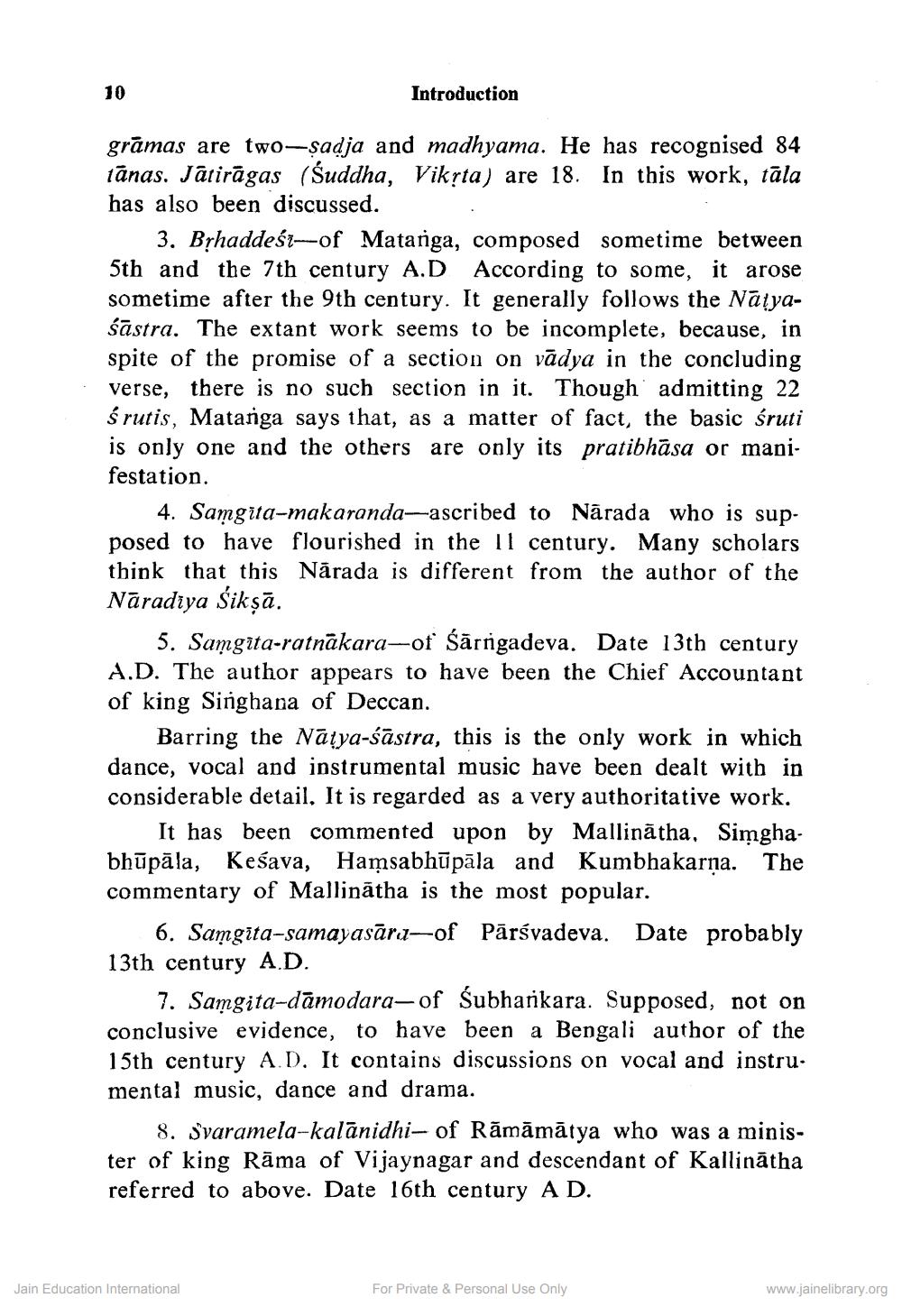________________
10
Introduction
grāmas are two-sadja and madhyama. He has recognised 84 tānas. Jātirāgas (Suddha, Viksta) are 18. In this work, tāla has also been discussed.
3. Brhaddeśı-of Matarga, composed sometime between 5th and the 7th century A.D According to some, it arose sometime after the 9th century. It generally follows the Natyaśāstra. The extant work seems to be incomplete, because, in spite of the promise of a section on vādya in the concluding verse, there is no such section in it. Though admitting 22 śrutis, Matanga says that, as a matter of fact, the basic śruti is only one and the others are only its pratibhāsa or manifestation.
4. Samgita-makaranda--ascribed to Nārada who is sup. posed to have flourished in the 11 century. Many scholars think that this Nārada is different from the author of the Nāradiya Śikṣā.
5. Samgita-ratnākara-of Śārrgadeva. Date 13th century A.D. The author appears to have been the Chief Accountant of king Singhana of Deccan.
Barring the Natya-śāstra, this is the only work in which dance, vocal and instrumental music have been dealt with in considerable detail. It is regarded as a very authoritative work.
It has been commented upon by Mallinātha, Simghabhūpāla, Keśava, Hamsabhūpāla and Kumbhakarna. The commentary of Mallinātha is the most popular.
6. Samgita-samayasārı-of Pārsvadeva. Date probably 13th century A.D.
7. Samgita-dāmodara-of śubharkara. Supposed, not on conclusive evidence, to have been a Bengali author of the 15th century A.D. It contains discussions on vocal and instru. mental music, dance and drama.
8. Svaramela-kalānidhi- of Rāmāmātya who was a minister of king Rāma of Vijaynagar and descendant of Kallinātha referred to above. Date 16th century AD.
Jain Education International
For Private & Personal Use Only
www.jainelibrary.org




